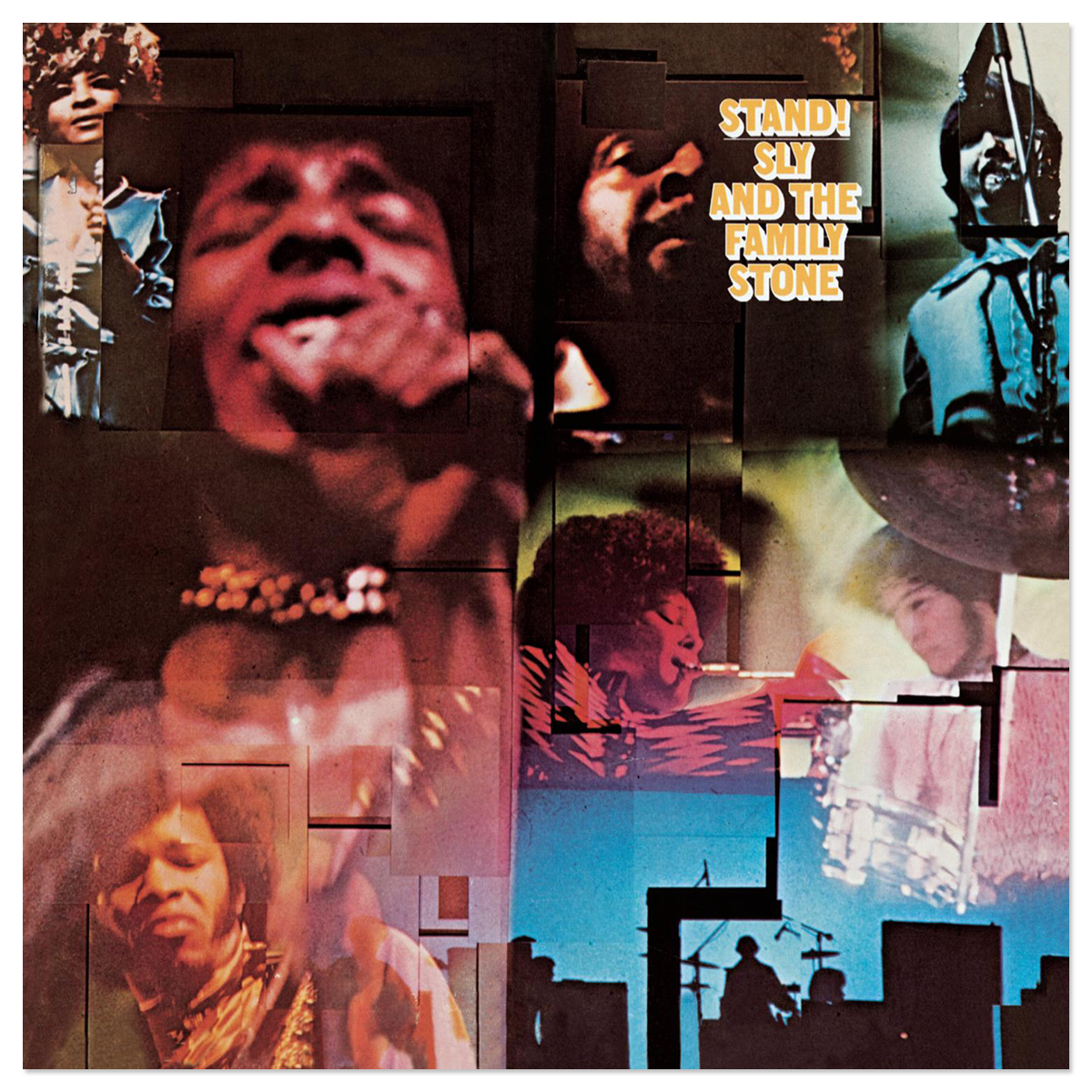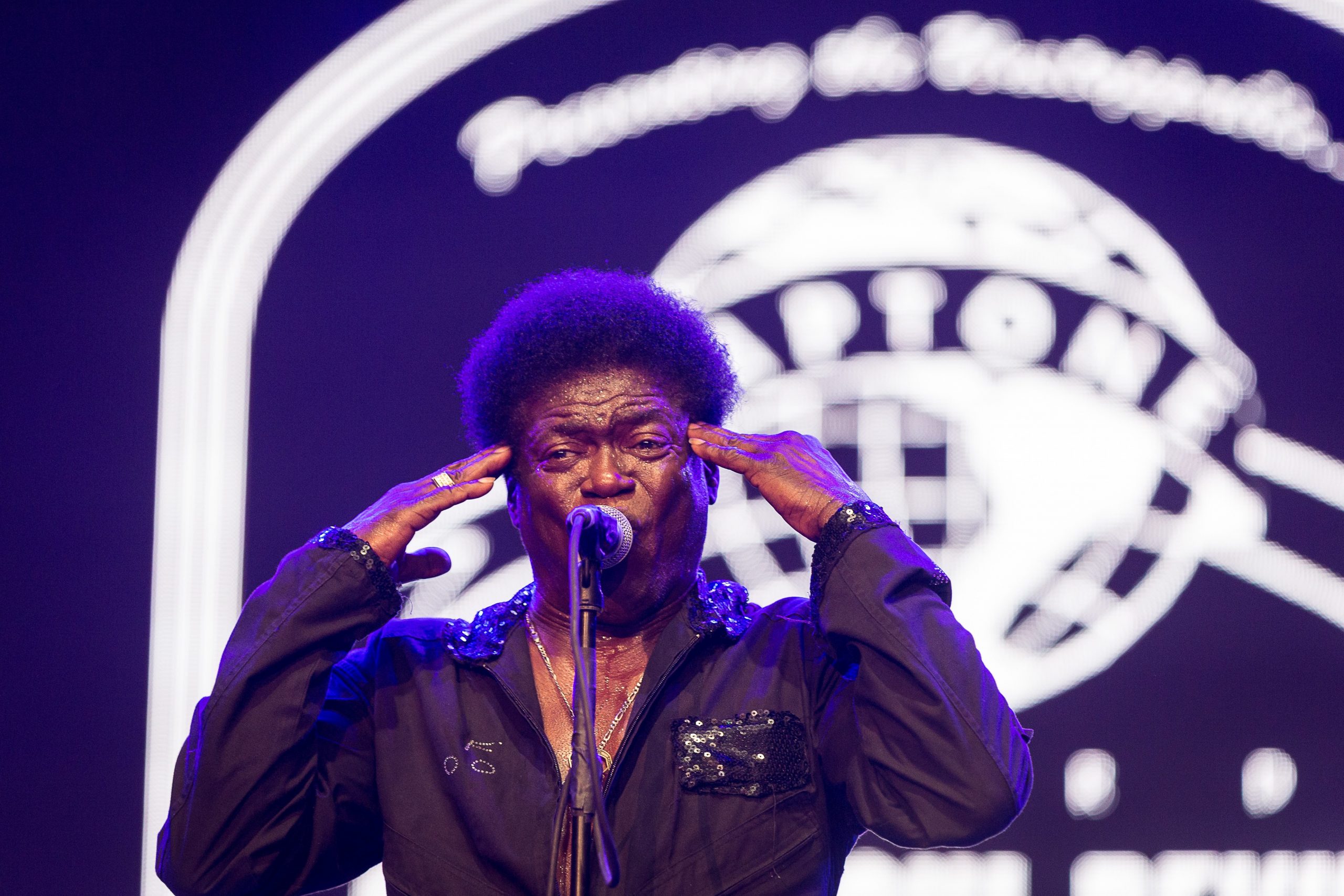Weird: The Velvet Underground's second album doesn't feel 50 years old. Granted, Lou Reed and Sterling Morrison are no longer with us, Mo Tucker went Tea Party, and John Cale... well, he's a still-active 75. But aside from the fact that guitar-bass-drums rock bands aren't the default for experimental pop music anymore (if they ever were), the VU's sophomore LP remains too damned strange, too confrontational and transgressive and full of life and noise and intensity, to feel as prone to the vagaries of time as most other albums that came out in 1968. Along with student-led revolutions, Stanley Kubrick/Douglas Trumbull cinematographical tricks, and intimidating fastballs thrown inside, White Light/White Heat is one of those things from 1968 that feels less like the past and more like a bracing dose of potential and promise and amazement with no need for nostalgic hindsight to keep it from being as inspiring as it could be.
In short, it's one of those records that feels like it deserves a conversation more in-depth than just a taxonomy of what genres came from where -- though imagining glam, punk, industrial, noise, and any other manner of even halfway avant-garde rock without it is like trying to build a car without a transmission. White Light/White Heat is all amphetamines and mania, body horror and bloodletting, sex and violence that treads a line between good old straightforward wild-ass rock 'n' roll and something more arcane and abstract and unnerving. It's just invigorating and out-there enough that more than a few rock bands caught onto its singularly appealing ugliness long after it plummeted from its lofty #199 perch on the Billboard album charts, though good luck to anyone trying to straight-up duplicate it -- better that they channel it through their own means, and see where all the blinding flashes take them. Here's a few pivotal moments where the songs of White Light/White Heat found some of their better translations.
"White Light/White Heat," David Bowie (1973)
"White Light/White Heat," Mick Ronson (1975)
https://youtube.com/watch?v=C-gWW0xfYc8
https://youtube.com/watch?v=Ig3OS1SiBBI
Mick Ronson's post-Bowie career was a strange one. As one of the most important architects of the glam-rock sound and a guitarist regularly recognized as an all-timer, his solo career lost momentum after two post-Aladdin Sane LPs and he spent most of the latter '70s through the '80s as a sideman and arranger. (One of his arrangements was an assist on John Cougar not-yet-Mellencamp's "Jack & Diane," so at least he did OK for himself there just off that brush with rock history alone.) 1974's Slaughter On 10th Avenue is a jam and has its well-earned fans, but by '75, the covers-heavy Play Don't Worry felt like an afterthought to his work with Mott The Hoople and Ian Hunter -- and, to old fans disillusioned with the Philly Soul metamorphosis of Young Americans, to the old Bowie himself. That's why it seems like kind of a bitter triumph that Ronno's cover of "White Light/White Heat" runs away as the best cut on Play Don't Worry: Ronson's most famous association with the song began in 1973, when the show depicted in the belatedly released 1984 D.A. Pennebaker concert film Ziggy Stardust And The Spiders from Mars: The Motion Picture bridged their version and set-closer "Rock 'n' Roll Suicide" with Bowie's era-ending announcement that "not only is it the last show of the tour, but it's the last show that we'll ever do."
This VU cover is, of course, a hell of a thing, performance-wise, preceded as it is with Bowie's fairly deadpan assessment of the song's writer: "I think he's a friend of mine," he says less than a year after the Bowie/Ronson co-produced Transformer turned Reed from a cult hero to a cult hero whom at least a few people on the street had heard of. (His namedrop gets a good crowd pop, too.) It hits all the proto-motorik switches of the original while giving it a bit more of a limber swagger, the difference between bashing something with a pipe and whipping it with a chain. The catch is that while the band would head to the studio less than a week later to begin work on Bowie's own cover album Pin Ups, "White Light/White Heat" was recorded in an even more ferocious version, only to be cut from the album on account of it not fitting the rest of the "swingin' London" feel of the Who/Yardbirds/Pretty Things-heavy tracklist. So instead of being the best track on Bowie's covers album, it became the best track on Ronson's mostly-covers album, the backing instrumentation donated to Mick for him to do his own thing over. It is far and away one of the gnarliest Ronson guitar performances that most Ziggy Stardust fans haven't heard, and it'd still kick ass if he hadn't stepped right into the ideal midpoint of Bowie's rafter-aimed theatrics and Reed's coyly smartassed junkie-soul for the lead vocal. But he did, whew.
"Sister Ray Says," Suicide (1978)
If you had to pick what band best caught the same artful-slash-primitive and thoroughly disconcerting feeling the Velvets did with this album 10 years later, you could do way worse than Suicide. Sure, beat-to-shit Farfisas and first-wave drum machines aren't the clearest analogue to the psychedelia-inverting powers of a Cale/Morrison/Tucker clamor, but as far as bands fronted by Jewish-raised Brooklynites who captured the hauntological weirdness of early rock and fused it with the noisy unnervingness of a future spiralling out of control? If you liked "The Gift," you'll love "Frankie Teardrop." (Replace "like"/"love" with various forms of creeping dread and horror where applicable.) "Sister Ray Says" isn't entirely a cover of the 17-and-a-half-minute White Light/White Heat-closing masterpiece of monomaniacal repetition and slow-burning escalation of chaos -- can it really be if it only goes four minutes and change? -- but as spasmed through Alan Vega's tics, it's faithful in some of the more important ways. Even if he jumps right to the "suckin' [on] my ding-dong" line and doesn't seem much inclined to engage in the bulk of the lyrics' circular, manic narrative, Vega gives Martin Rev a springboard to reduce the rock drone the Velvets pioneered into a compact burst of hissing electronic mechanical compulsion that refuses to resolve itself in a satisfactory way, all so that feeling can set in even longer than the actual runtime. The VU original is a Grateful Dead jam in comparison.
"Here She Comes Now," Cabaret Voltaire (1979)
Single out the three most influential cuts on White Light/White Heat based strictly off the renditions they inspired, and you'd have to swap out "The Gift" -- which is significantly more prone to being paid tribute as an amateur homemade film adaptation than an actual cover -- for "Here She Comes Now," the shortest and simplest song on the original LP. A reduction of contemporaneous pop tropes to something both more simple and more enigmatic -- baroque post-Simon & Garfunkel folk-rock gritting its teeth behind a relaxed smile, featuring a possible love interest (or just a generic musical-topic "she") reduced to the abstract, literally, in that "she's made out of wood." Whether it's an oblique reference to the female orgasm or a right-in-front-of-you literal song about Reed's own guitar, it's a nice side-ending comedown before everything gets flipped over for the one-two neck-twister of "I Heard Her Call My Name" and "Sister Ray." But even one of the flat-out prettiest songs in the whole Velvet Underground catalogue has the potential for abrasion, and few artists had the right-place-right-time context to turn that abrasion into something new like Cabaret Voltaire. Post-punk experimentalists and industrial music pioneers who swapped out Warhol for Duchamp and made their own mutation of pop art/art pop, the Sheffield trio survived years of performing to alternately baffled and hostile pre-punk audiences to drop a debut EP on Rough Trade in '78, and taking on the VU was less a torch-passing than them just actually snatching the torch -- by the flaming end. Their "Here She Comes Now" is twice as long and octuple times as dissonant, twisting that guitar riff into a two-stroke minor-key rev with a mocking little tinny keyboard wheedle beneath it. And nothing makes "here she comes now" sound like "oh god get her away from me" than the fizzing, spark-throwing stings that come after each line in their delivery of the chorus: "Ah, she looks so good [frrzzrffffffsh]/Ah, she's made out of wood [robot getting its throat slit]."
"Sister Ray," Joy Division (1980)
"Sister Ray," New Order (1987)
Never take for granted just what it meant for Joy Division to lose Ian Curtis, only to reconvene as New Order. It's maybe the greatest instance of one band of profound influence transforming into another band of similarly profound yet somewhat differently aimed influence, sharing little between them but Peter Hook's ear for propulsive basslines and the occasional outburst from Bernard Sumner's guitar. Want an easy example? Sure: "Sister Ray" made the closing slot of both bands' setlists, with Joy Division's postmortem rarities/vault-fodder comp Still featuring their last-ever performance of the song at West Hampstead's Moonlight Club and New Order capping off their 1987 Glastonbury set with it. (That they opened this set with their instrumental Curtis tribute "Elegia" is worth noting for potential interpretation.) Joy Division's "Sister Ray" is fittingly bottom-heavy, the machine-time Peter Hook/Stephen Morris rhythm section playing up the influence the Velvets had not just on post-punk but Krautrock. It's still difficult to really fathom Ian Curtis even using the term "ding-dong," but given how he gives his unmistakable gravitas to that whole line about Cecil shooting the sailor ("Hey man, you shouldn't do that/ Don't'cha know you'll stain the carpet") that turns a glib punchline into something a bit more morbid, it's more than worth the brief disconnect -- especially once it hits that frenzied buildup/breakdown to a very literal series of "goodnights" and "goodbyes." Strangely enough, it's New Order's version that feels a bit more guitar-heavy and serrated, even as Sumner indulges his habit of concocting his own free-associating lyrics for the song -- which, welp, are easy enough to imagine him singing: "Sister Ray said, "Oh, you mean so much to me/ 'Cause I love you/ 'Cause your name begins with B"/ I said, "that's not a very good reason."" I don't know anyone who listens to New Order for the lyrics, anyways, though I figure that's Bernard having a bit of a laugh at that rep. Whatever, who cares, enjoy the torrential downpour of feedback-fueled havoc that makes the finely tuned machine splinter apart into a fantastic malfunction around the seven-minute mark.
"Heard Her Call My Name," Lime Spiders (1987)
https://youtube.com/watch?v=ZTrbfKFvSR0
"I Heard Her Call My Name" might be the least-notorious song on White Light/White Heat -- which isn't saying much for an album that also includes "The Gift" and "Lady Godiva's Operation," to be honest, but here we are. And it's still a notable song in its own right, given that it's one of Reed's most frenetic and unpredictable lead vocals -- a man shouting into a tornado as his guitar snatches the psychedelic flourishes other bands were trying to get transcendental with and turns them into a bludgeoning weapon. Just listen to everything that happens on this song after Reed belts "And then my mind split open" -- this ain't some hippie freakout, this is rock 'n' roll Albert Ayler. That anyone even tried to cover this seems bordering on an idea somewhere between blasphemous and redundant, but Sydney psych-punkers Lime Spiders had a sans-"I" go of it on the 12" version of their 1987 single "My Favourite Room" and it's at least got its own feel to it. If you'll forgive the Twin Cities bias in this comparison, it's sort of like if the "Kick Your Door Down"-mode Replacements took whatever it was that inspired Hüsker Dü to record "Reoccuring Dreams" and came out with a somewhat cleaner but still hyperventilating jackhammer take on it. The coda's not as intense -- what is? -- but putting Richard Lawson's drums a lot higher in the mix than Mo Tucker's were adds a character in itself that sets it apart.
"Here She Comes Now," Nirvana (1990)
"Here She Comes Now," Galaxie 500 (1990)
So here's another fun compare-and-contrast: Alt-rock's biggest success-slash-tragedy and one of indie's most revered lightning-in-a-bottle bands both recorded covers of the same Velvet Underground song in the same year, with Nirvana's appearing on a tribute album released a year before they blew up and Galaxie 500's put on the B-side of their single "Fourth Of July" a year before they broke up. If you want to ascribe some sort of deeper implications to this pairing, go right ahead -- there's a chance you'll hear what I do, a culmination of the split between underground rock wearing its punk influence on its sleeve and paring back the volume for something more contemplative. Various versions of Nirvana's "Here She Comes Now" became a frequent fixture on bootlegs, rarity comps, and reissues almost immediately after Cobain's death -- more than eight in 1994 alone -- while the rare, variant-crazy split 7" it appeared on with Melvins' version of "Venus In Furs" in '91 has become a collectors' item. The song itself? Forget the quiet-verse-loud-chorus cliches you might remember about their biggest cuts; this is what happens when they opt for building momentum and rising to a crest, every facet of Cobain's voice from warm daze to pained howl matched by the way his guitar goes from jangly to fuzzed-out. Galaxie 500's take is striking in almost the exact opposite way: Dean Wareham's always had a thing for drawing out every detail in a composition just by elegantly slowing it down, and Galaxie 500's frequent VU nods find their most literal connection in a fittingly subversive way -- by taking one of the Velvets' most upbeat, hookiest songs (pre-Loaded, anyways) and turning it into a woozy ether frolic that gives it more in common with, say, a reflective moment like "Pale Blue Eyes" than the original.
"White Light/White Heat," Julian Casablancas (2016)
Fifteen years after every other critic on Earth claimed that the Strokes sounded like the Velvet Underground, their frontman covered the Velvets and sounded like... Julian Casablancas. Like the failed HBO series Vinyl it originated from, turning Julian into Rock 'n' Roll Animal-era Lou Reed seems like more of a quasi-blasphemous wink and a nudge towards the '70s New York rock history's more self-serious side than an actual tribute to it. But if it's not the most credible imitation of how things actually sounded in 1973, it's also enough of a gimme idea that it's at least understandable how Reed evolved in the five-year interim between the original recording and his berserker-glam rework. Accept no imitations, but at least don't fault a man for trying here; it's at least good to recognize an artist for himself rather than the simulacrum that skeptics thought he was.






